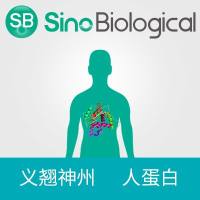Methylation and Uracil Interference Assays for Analysis of Protein‐DNA Interactions
互联网
- Abstract
- Table of Contents
- Materials
- Figures
- Literature Cited
Abstract
Interference assays identify specific residues in the DNA binding site that, when modified, interfere with binding of the protein. The protocols use end?labeled DNA probes that are modified at an average of one site per molecule of probe. These probes are incubated with the protein of interest, and protein?DNA complexes are separated from free probe by the mobility shift assay. A DNA probe that is modified at a position that interferes with binding will not be retarded in this assay; thus, the specific protein?DNA complex is depleted for DNA that contains modifications on bases important for binding. After gel purification, the bound and unbound DNA are specifically cleaved at the modified residues and the resulting products analyzed by electrophoresis on polyacrylamide sequencing gels and autoradiography. In the methylation interference protocol presented here, probes are generated by methylating guanines (at the N?7 position) and adenines (at the N?3 position) with DMS; these methylated bases are cleaved specifically by piperidine. In the uracil interference protocol, probes are generated by PCR amplification in the presence of a mixture of TTP and dUTP, thereby producing products in which thymine residues are replaced by deoxyuracil residues (which contains hydrogen in place of the thymine 5?methyl group). Uracil bases are specifically cleaved by uracil?N?glycosylase to generate apyrimidinic sites that are susceptible to piperidine. These procedures provide complementary information about the nucleotides involved in protein?DNA interactions.
Table of Contents
- Basic Protocol 1: Methylation Interference Assay
- Basic Protocol 2: Uracil Interference Assay
- Reagents and Solutions
- Commentary
- Figures
Materials
Basic Protocol 1: Methylation Interference Assay
Materials
Basic Protocol 2: Uracil Interference Assay
Materials
|
Figures
-

Figure 12.3.1 Uracil interference. An oligonucleotide or restriction fragment (long arrow) containing a protein‐binding site (hatched box) is amplified by PCR using one unlabeled primer (short arrow) and one 5′‐labeled primer (asterisk) in the presence of dGTP, dATP, dCTP, dTTP, and dUTP, producing reaction products in which deoxyuracil is randomly substituted for thymine on both strands. This collection of DNA molecules is incubated with the protein of interest and DNA molecules containing deoxyuracil substitutions that do not interfere with protein binding are selected by purifying the DNA‐protein complex away from unbound DNA. The resulting DNA is cleaved at uracil residues using uracil‐ N ‐glycosylase followed by piperidine, and the reaction products are separated on a denaturing polyacrylamide gel. (Reprinted from Pu and Struhl, , by permission of Oxford University Press.) View Image -

Figure 12.3.2 Hypothetical autoradiogram of a methylation interference experiment, as described in Anticipated Results. Guanines and adenines that interfere are indicated by asterisks. View Image
Videos
Literature Cited
| Literature Cited | |
| Baldwin, A. and Sharp, P. 1988. Two transcription factors, H2TF1 and NF‐kB, interact with a single regulatory sequence in the class I MHC promoter. Proc. Natl. Acad. Sci. U.S.A. 85:723‐727. | |
| Brunelle, A. and Schleif, R. 1987. Missing contact probing of DNA‐protein interactions. Proc. Natl. Acad. Sci. U.S.A. 84:6673‐6676. | |
| Goeddel, D.V., Yansura, D.G., and Caruthers, M.H. 1978. How lac repressor recognizes lac operator. Proc. Natl. Acad. Sci. U.S.A. 75:3579‐3582. | |
| Ivarie, R. 1987. Thymine methyls and DNA‐protein interactions. Nucl. Acids Res. 15:9975‐9983. | |
| Maxam, A. and Gilbert, W. 1980. Sequencing end‐labeled DNA with base‐specific chemical cleavages. Methods Enzymol. 65:499‐560. | |
| Pu, W.T. and Struhl, K. 1992. Uracil interference, a rapid and general method for defining protein‐DNA interactions involving the 5‐methyl group of thymines: The GCN4‐DNA complex. Nucl. Acids Res. 20:771‐775. | |
| Siebenlist, U. and Gilbert, W. 1980. Contacts between E. coli RNA polymerase and an early promoter of phage T7. Proc. Natl. Acad. Sci. U.S.A. 77:122‐126. | |
| Key References | |
| Hendrickson, W. and Schleif, R. 1985. A dimer of AraC protein contacts three adjacent major groove regions at the Ara I DNA site. Proc. Natl. Acad. Sci. U.S.A. 82:3129‐3133. | |
| Provides good descriptions of methylation and ethylation interference procedures as well as interpretations of major groove contacts. | |
| Maxam and Gilbert 1980. See above. | |
| Describes DNA labeling, modification by DMS, and polyacrylamide gel electrophoresis. | |
| Pu and Struhl, 1992. See above. | |
| Describes original method for uracil interference. |








